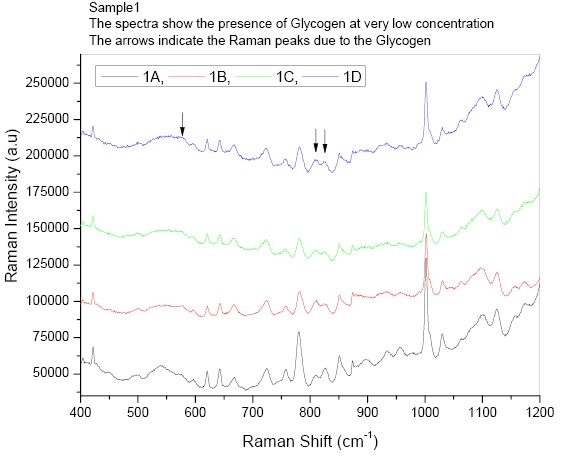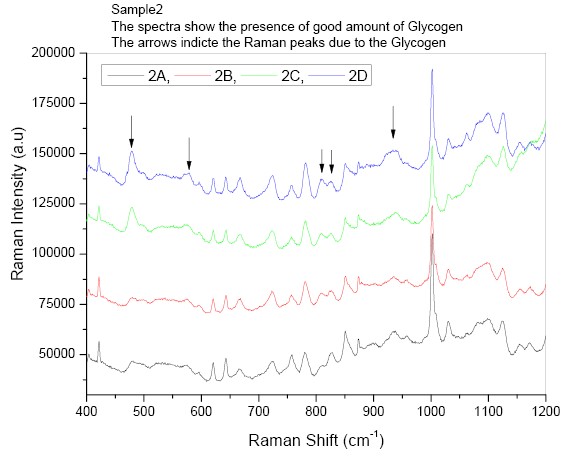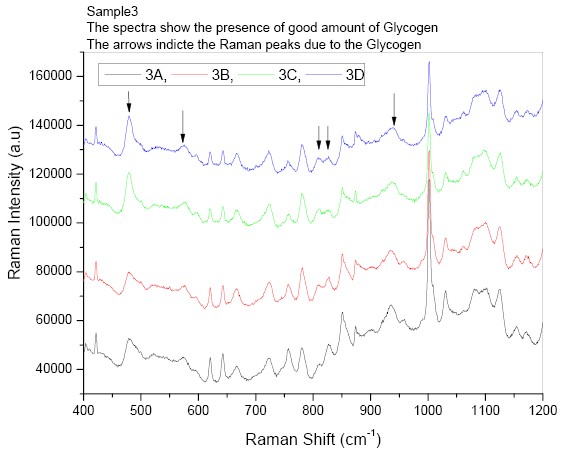Team:Edinburgh/Results/Glycogen4
From 2008.igem.org
< Previous Assay | Back to Results | Next Assay >
Glycogen Assay 4 (Quantitative: Raman Spectroscopy)
Raman spectroscopy was performed by Dr Rabah Mouras, School of Engineering & Electronics, University of Edinburgh.
Experiment Design
See Glycogen Assay 3 for explanation. Since we had now determined that Raman spectroscopy was a suitable method for assay of glycogen levels, we went on to investigate glycogen production by different constructs under different conditions. In all cases, cultures were grown overnight in LB with ampicillin (100 mg/l), IPTG (90 mg/l) and varying levels of glucose. Incubation was at 37 C with shaking. Cells were then harvested by centrifugation from 1 ml of cultures and resuspended in 0.1 ml ethanol to kill them (a safety requirement for GM organisms before they could be removed from the laboratory for analysis). They were then analysed by Raman spectroscopy in the laboratory of Dr. Rabah Mouras, School of Engineering & Electronics, University of Edinburgh.
Legend
Organisms:
- Sample 1: Control strain of E. coli containing a plasmid that should have no effect on glycogen levels.
- Sample 2: E. coli overexpressing glgC from pSB1A2-BBa_K118019.
- Sample 3: E. coli overexpressing glgC16 from pSB1A2_BBa_K118020.
Growth Conditions:
- Condition A: normal growth medium (LB, or L-broth).
- Condition B: LB + 10 mM glucose.
- Condition C: LB + 25 mM glucose.
- Condition D: LB + 50 mM glucose.
It is expected that the presence of higher levels of glucose, up to a point, will increase the amount of glycogen produced by the cells.
Results
From these spectra it can clearly be seen that the glycogen peaks are much higher in cells expressing glgC and glgC16 than in control cells, expecially in the presence of elevated glucose levels. The glgC16-expressing cells appear to produce significantly more glycogen than the glgC-expressing cells at lower cocentrastions of glucose. By further analysis of these data (ongoing), comparing glycogen to protein peaks, we hope to be able to generate a ratio of glycogen to protein which will provide accurate quantitation of the glycogen levels in the cells.
 "
"



